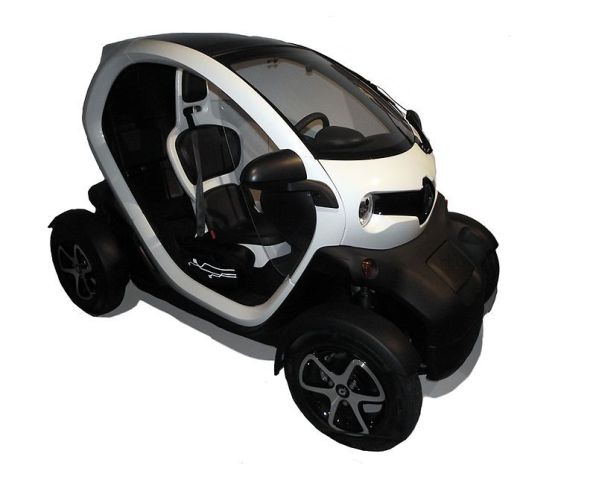
Plastics: a heavy hitter in the automotive industry
Cars on a diet
Let us clear up a misunderstanding. The current generation of cars is not any lighter than that of any of the preceding generations. In fact, most of them are actually heavier. Citroën's DS, which was very popular in the 60s, weighed a bare 1350 kg, while modern sedans in the same category often weigh almost half a tonne more. This is the price of our thirst for equipment devoted to our comfort and security. Although fuel consumption has been reduced, it is mainly due to engine manufacturers.
Happily, those days are gone. CO2 emissions for vehicles are currently limited at 130 g/km by European rules, and they will be further reduced to 95 g/km from 2020. The formula is extremely clear for manufacturers: 10 kg = 1 g CO2/km or 4 cl of fuel/100 km. Under these conditions, plastics not only have to curb the increasing weights of vehicles, but must also contribute to making them lighter as well. The PSA group, for example, has managed to significantly reduce the weight of its recent models thanks to an aluminium, plastics and composites-based diet devised with the help of equipment manufacturers. As a result, the C4 Picasso lost 140 kg, and the eco-sporty Peugeot 208 Hybrid FE lost 195 kg.
Composites to the rescue
Ever since BMW launched its i3 electric city car equipped with a polymer matrix composite interior, all of the major manufacturers have invested in these materials which promise performance and with weight reduction properties. Until recently, they had only been used in the mass production of cosmetic and non-structural parts due to mechanical resistance limits and high productions costs.
Replacing fibreglass with costlier carbon helped overcome the first sticking point, but not the second.
The problem is that mass production techniques are not compatible with high performance composites, excepting through the RTM process (Resin Transfer Moulding). That is, as long as the resin's cooking time, polymerisation time and part impregnation time, all proportional to the size of the part, are reduced.
In its dedicated plant, BMW's high pressure RTM process managed to shave the time down from 30 minutes to 10 minutes for large parts. The structure of the composite base module is made up of approximately 150 different parts, almost a third of the number of parts needed for assembling a sheet steel body.
Thermoplastics first
Not all manufacturers have the luxury of a manufacturing unit dedicated solely to producing "composite" body, high-end sedans. They therefore need to lower costs by using parts designed for their existing production lines.
Many equipment manufacturers have opted for thermoplastic matrix composites, which have been deemed to be better suited to their industrial lines than their thermosetting counterparts. What's more, they are more easily recyclable.
Faurecia, for instance, has been manufacturing modular floors made from a polyamide matrix composite with a heat-embossed fibreglass reinforcement. This material, which is three times lighter than steel but just as resistant, enables the parts to be welded or overmoulded.
Plastic Omnium developed a bumper beam, for Hyundai, made from a mixed glass fibres, carbon composite and thermoplastic resin, that is 43% lighter than its steel equivalent. It is now planning to launch structural parts made from a recycled carbon fibre-based composite material for a major European car manufacturer.
Reminder on materials
A composite material can be defined as a combination of a matrix, normally a plastic (thermoplastic or thermosetting resin) and a reinforcement (fibres), which when combined gives properties superior to the properties of the individual components.
A thermoplastic, is a plastic material that becomes pliable or moldable above a specific temperature and solidifies upon cooling.It can be heated and molded over and over again. Because thermoplastics can be melted and reused without any change in material properties, these polymers can be actively recycled.
Thermoset, or thermosetting plastics are synthetic materials that undergo a chemical change when they are treated, creating a three-dimensional network. After they are heated and formed, these molecules cannot be re-treated and reformed.
Technical terms:
Photopolymerization is the chemical reaction using light waves (UV) to form plastics from initial molecules.
Rotomolding, also known as rotational molding, is a process used to form hollow plastic objects. A hollow mold is filled with a charge of powdered polymer, heated and subjected to a double rotation along two orthogonal axes before cooling and demolding the product.
Thermo-stamping is a transformation process used to shape and cut pre-impregnated composite plates or membranes. They are preheated to a temperature that varies according to the resin used, and then pressed between the two blocks of the matrix corresponding to the product to be manufactured.
3D printing accelerates the pace
Replacing metal with composites in mass production is a formidable industrial challenge that Mäder, a company specialising in industrial paints and resins, is poised to meet.
While looking for a flexible and efficient solution to equipment manufacturers' expectations, the company developed a 3D printing technology based on photopolymerisation. The technology enables composite parts to be manufactured at a rapid rate from a polyester resin capable of being photopolymerised on its surface and inside.
This "automated linear moulding" process entails spraying the resin and fibres into a mould and then polymerising them under UV rays emitted by LEDs. Cycle time is approximately one part per minute, while the previous process used SMC (Sheet Moulding Compound), and required five minutes for compression and polymerisation at 150C°.
Incredibly, this high rate is achieved through a process that consumes 5,000 times less energy and without emitting volatile organic compounds (VOCs). It is more than a simple boon for car manufacturers and equipment manufacturers; it is the dawn of a new revolution.





